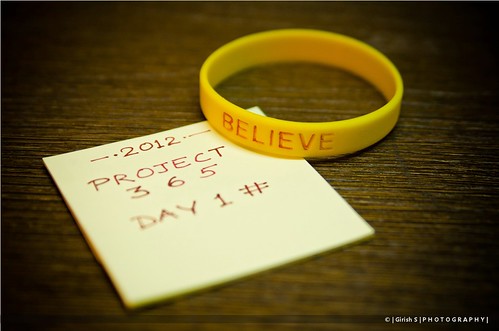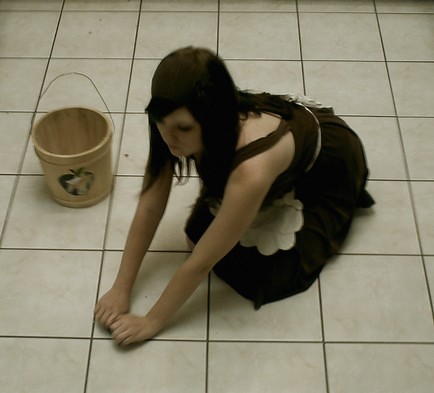All posts by Krylyn
Giving (Positive) Thought to Better Self Care
Many of us know that wanting something (such as better health or relationships or making ourselves a bigger priority in our own lives) and getting it are two very different animals. Wanting something just requires a thought, a wish. Getting it requires action. Wanting without action can turn to longing and resentment of dreams unrealized. In order to get what you want, you must either DO SOMETHING or DO SOMETHING DIFFERENT. Seems simple enough. So why do so many of us struggle with it?
 It’s because taking action is often tied to other things we can’t see and sometimes don’t even realize are there. Things like attitudes and thoughts. We may put the blame on things we CAN see, like:
It’s because taking action is often tied to other things we can’t see and sometimes don’t even realize are there. Things like attitudes and thoughts. We may put the blame on things we CAN see, like:
- Spouses
- Kids
- Parents
- Bosses
- Jobs
- Money
- Circumstances
It’s easy to throw around excuses. And everyone seems to relate. But when you start to look at your attitudes and thoughts, that’s when you start to see that you (not others and not your circumstances) have the ultimate power in turning what you want into what you have. Let’s take a deeper look.
Think of your attitude as your overall approach to life. Some people have a positive attitude and can see good from the darkest of situations. People with a negative attitude generally discount (or simply cannot see) any positive aspects of a situation. Many people fall somewhere between and depending on the situation may be more inclined to have a positive or negative attitude.
Thoughts include what you think about yourself, others, and the world around you. They are shaped by your underlying beliefs and your overall attitude. When we have recurring types of thoughts, they become thought patterns that drive what we say and do.
We can learn to retrain ourselves to have a more positive attitude by simply starting to notice our reactions to situations as they come up then consciously choosing more positive thoughts. Here’s some suggestions on how to do that:
- Write down thoughts you have about yourself and others in reaction to a stressful situation. Once you do this enough, you might start to see some of the patterns you have.
- Ask trusted people around you if they think you generally have a positive or negative attitude. Ask them for examples of things you say and do that leads them to think the way they do. Ask them to notice ways that you react that are both positive and negative. This way, you can gather what having a positive and negative attitude looks like for you.
- Keep a list of positive thoughts with you at all times. Take it out and read it aloud when you notice negative thoughts and a negative attitude creeping in.
To learn more about what keeps you from making yourself more of a priority in your own life, please join me for the first of my monthly FREE Telseminar series, “Beyond Bubble Baths and Massages: Making Yourself a Priority in 2012.” Simply go to the REGISTRATION page and enter your name and email to get signed up.
Photo: Believe !! © by girish_suryawanshi
Self Care: Beyond Bubble Baths and Massages

Most people think of self care in terms of bubble baths and massages, that “quick fix” technique to undo the stress, worry, and tension that has accumulated. While things like bubble baths and massages might help alleviate some immediate effects of stress, worry, and tension, they certainly cannot prevent us from reacting to the day to day events and situations in our lives that overwhelm us.
True self care is really more about PREVENTION than INTERVENTION. Let’s take a look at intervention first. Intervention has to do with reacting to what has happened. A fight with a loved one, an unrealistic demand from a supervisor, an unexpected expense, etc. We might react by verbally attacking someone else or biting our tongue. We might automatically think the other person is at fault (for this and perhaps everything else going wrong in our lives) or we might think “what’s wrong with me” or “why does this always happen?” In order to deal with our reaction, we might turn to stress relieving activities, such as bubble baths and massages. But once the water drains and the last muscle is kneaded, we’re still left with the consequences of our reaction. We may have said or done something we regret to someone else or even ourselves. Which leads to other interventions, healthy or not so healthy, and the cycle continues. Some examples of intervention strategies might include:
- Yelling into a pillow (rather than at someone else)
- Treating yourself to decadent dessert
- Taking a long, hot bubble bath
Prevention has to do with setting ourselves up for success and shaping our reaction BEFORE we have it. It involves respecting ourselves enough to make healthy choices more often than we make unhealthy ones. It’s about lifestyle, consistency, and commitment. By committing to prevention, we can learn to take care of ourselves (mind, body, and spirit) in ways that helps us take time out before we respond, choose our words and our actions, and deal with stressful situations in ways that honor not only ourselves but others. Ultimately, prevention is about how we treat ourselves – the actions we take to care for ourselves, the thoughts we have, and how we feel about ourselves. Some examples of prevention strategies might include:
- Getting enough sleep each night (7 to 9 hours)
- Moving your body regularly (walking, working out, etc.)
- Saying positive affirmations to yourself daily
While bubble baths, massages, and other nurturing intervention strategies can be part of an overall self care plan, they are only a small part. For true and lasting ways to take better care of ourselves, it’s important to incorporate prevention strategies.
To learn more about how you can take better care of yourself, please join me for the first of my monthly FREE Telseminar series, “Beyond Bubble Baths and Massages: Making Yourself a Priority in 2012.” Simply go to the REGISTRATION page and enter your name and email to get signed up.
From Wishful Thinking to DONE: How to Accomplish Those New Year’s Resolutions

Buckle your seatbelts, cause it’s that time of year…again. Time for a fresh start. A clean slate. A new beginning. It’s January 1st. It’s the time of making goals, reviewing where we are compared to where we were, and exploring where we want to go from here. Happy (Flippin’) New Year!
For some of us, the new year is a joyous celebration of all the possibilities of what lies ahead. There’s excitement and anticipation and a resolve to make some positive changes in our lives. We’ve got our resolution lists ready, the best of intentions, and the energy of possibility looming in the air.
But for others, it’s a time of mixed emotions, regrets of goals not realized, and a self-defeating attitude of “it didn’t work before so why try again.” We may wallow in promises made to ourselves and broken. You may know (either from personal experience or from what you’ve heard) that most New Year’s resolutions fizzle out by the end of January? That’s a lot of hopes, goals, and dreams being cast aside in a short period of time. And for what? Lack of wanting? Probably not.
You’ve probably heard the old saying “best of intentions.” We all have them. But stuff, (like life) just gets in the way. And we can find ourselves right back where we started. But we must keep in mind that wanting something isn’t enough to make it happen. True and lasting change requires not only a decision on our part to WANT a change but also some action to BRING ABOUT a change.
What change are you WANTING for the new year? Many resolutions involve:
- Better Health (lose weight, eat better, exercise regularly, manage stress, etc.)
- Better Relationships (find a partner, lose a partner, better communication, more time with friends and family, etc.)
- Better Career/Education/Finances (go back to school, make more money, pay off debt, get a better job, etc.)
But you must also find a way to BRING ABOUT the changes you are wanting. Because if you don’t do anything to get what you want, how do you expect to get it? It’s like planning a road trip without a map. You may know where you want to go but you don’t have a clear plan on how to get there.
Here’s some suggestion for how you can take your intentions and resolutions from wishful thinking to DONE:
- Write It Down. It’s one thing to think about what you want, and another thing entirely to write it down. Putting what you want in writing makes it more real. Think of it as a declaration and announcement to yourself and the world of your intention. Then write out the steps of HOW you will reach each goal and WHEN. Remember to set realistic goals for yourself.
- Get Visual. There’s tremendous power in pictures. Just think about TV and movies and you can easily see how getting the full story without pictures can be a challenge. Create a vision board or collage of what you want. Include pictures, drawings, and any other visual representation of your goal. Then post it where you can see it every day.
- Enlist Some Support. Achieving goals is easier with some support. Think about your own accomplishments and the support you received along the way. Support may look different for different people or different circumstances. Support can be a friend lending an ear (or shoulder to cry on) as you vent your fears, failures, and stumbling blocks. Or support can be someone lending you something you need to achieve your goal. Once you have a clear idea of your goals, figure out what kind of support you need to reach those goals, then go find it.
Managing Your Stress During the Holidays and Beyond: Tip #31 – Saying Goodbye to Yesterday
Welcome to the last day of 2011. December 31 is often a bittersweet time of not only welcoming the new year but also saying goodbye to the previous one. We can be full of mixed emotions, from anticipation to regret. Sometimes we can be so focused on what comes next that we forget to take time to reflect. In order to make room for all the possibilities of the new year, it can be beneficial to take some time to reflect on what this past year brought us, in terms of challenges, opportunities, and successes. And to say goodbye to this chapter in our lives. Today, take a moment to be grateful for your 2011, regardless of what happened, because it has set the foundation for your 2012 and is the basis for all the possibilities yet to come.
Managing Your Stress During the Holidays and Beyond: Tip #30 – Get in Touch with Your Inner Child
 Remember playing as a child so hard that you literally fell asleep when your head hit the pillow? Remember the games you would play – board games, video games, interactive games, games that you and your friends or family made up? Take some time to play this holiday season. It doesn’t matter what. What matters is that you smile, laugh, and get back in touch with your inner child no matter how old (or young) you are. It’s so easy to let fun go when stress takes over, but that’s when we need it the most.
Remember playing as a child so hard that you literally fell asleep when your head hit the pillow? Remember the games you would play – board games, video games, interactive games, games that you and your friends or family made up? Take some time to play this holiday season. It doesn’t matter what. What matters is that you smile, laugh, and get back in touch with your inner child no matter how old (or young) you are. It’s so easy to let fun go when stress takes over, but that’s when we need it the most.
Photo: Run Forestine ! © by YLegrand
Managing Your Stress During the Holidays and Beyond: Tip #29 – Be Consistent
 During this time many of us have time off from work and the regular routines we practice most days of the year. While getting a break from the mundane day-to-day of our lives can be a blessing, it can also upset some sort of balance we’ve already put in place. By all means, enjoy some less structured time, but be mindful of how straying too far from things like regular sleep times, meal times, and household routines can affect getting back to those routines when the time comes. Be as consistent as possible while also giving yourself a well-deserved break.
During this time many of us have time off from work and the regular routines we practice most days of the year. While getting a break from the mundane day-to-day of our lives can be a blessing, it can also upset some sort of balance we’ve already put in place. By all means, enjoy some less structured time, but be mindful of how straying too far from things like regular sleep times, meal times, and household routines can affect getting back to those routines when the time comes. Be as consistent as possible while also giving yourself a well-deserved break.
Photo: Charming Your Chores: Scrub That Floor! © by queercatkitten
